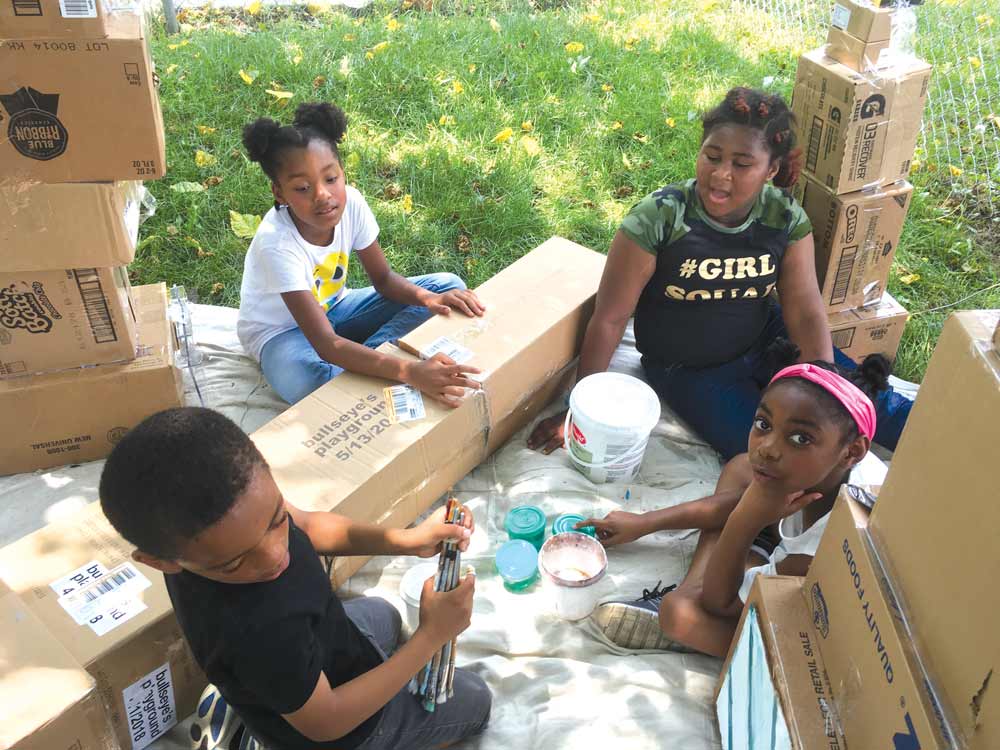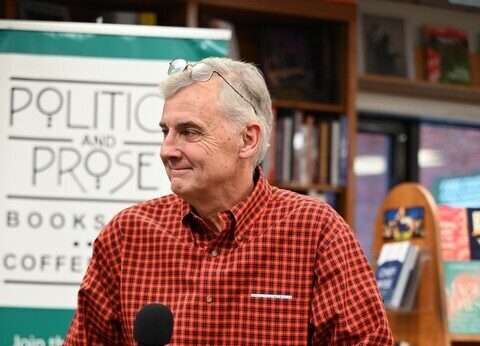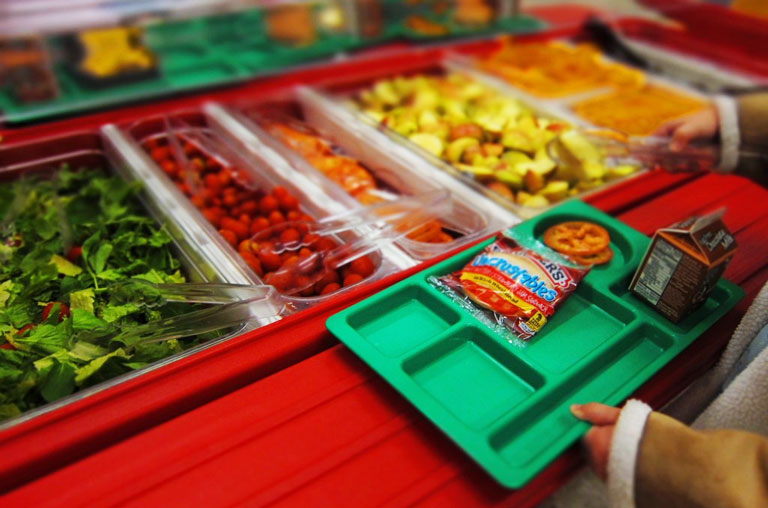While seeking a new home, the acclaimed Children’s Studio School has been taking its innovative classes on location so low-income and homeless children can learn in their own neighborhoods. Founder Marcia McDonell refers to the current state of the engagement as “Studio School on the Go-Go,” in celebration of D.C.’s cultural history embodied by musician Chuck Brown.
McDonell started the school 42 years ago to empower disadvantaged children, using a curriculum where they develop their minds by solving problems. Because homeless children are particularly at risk for underperforming and dropping out of school, the persistence of this program, which has had to change locations a few times over the years, is a blessing, according to one parent.
The school has been recognized for the accomplishments of its students. After the BP oil spill in 2010, a group of students created a prototype for a machine that would separate oil from water, with the second purpose of generating fresh water for Haiti, which was suffering a cholera outbreak from water contaminated as a result of after an earthquake. They presented the invention to the D.C. Council to gain support for the school, an exchange that was videotaped for public record. The kids were impressively articulate and self-confident when describing it to councilmembers, who gushed with praise.
And in 1993, National Endowment for the Arts Chairman Livingston Biddle lauded the school for providing “such experimentation, such critical selective thought so evident in both process and product.”

Parents attested to their children’s progress. Molly Bryant, the mother of a boy labeled a “problem child,” wrote in a letter to the editor of Washington City Paper in 2001 that in the three years her son was enrolled, he had grown academically, emotionally and artistically. “At Studio School, every child can succeed because every child is an artist,” she wrote.
McDonell’s “Arts as Education” pedagogy has been nationally-recognized for creative excellence since the 1970s. The approach is designed to engage a child’s intuition when it is most unfettered — around age two or three — to develop an analytical thought process. On a practical level, this means children are presented with a real-life problem, national or local, encouraged to brainstorm a solution, apply the solution, critique its feasibility and conduct an analysis. In 1996, the Washington, D.C. Commission on the Arts and Humanities found the students at the Studio School were “achieving academically at a much higher level than children at other schools,” and were more engaged and self-disciplined. In the 1990s the school partnered with D.C. Public Schools and conducted their program in residence at Cleveland Elementary School in the Shaw neighborhood.

Brandi Redo, mother to Solomon, one of the boys who presented the BP oil spill project to D.C. Council, also taught health and wellness at the school for 10 years.
“It was a very magical place. I was in love with the studio philosophy. I wish I had a school like that when I was growing up,” Redo said.
Redo said she would have benefitted from the school’s hands-on approach, saying that, like some children, she was always doodling or sketching to stay “present.” Because the program channeled children’s energy, she felt it could be ideal for children with ADD.
She and her students developed the Bathtub Garden, an eco-friendly project made of painted antique tubs inspired by a child’s suggestion on how to avoid rotting wooden planters — “bathtubs have drains.” Redo said they were learning science through art.
Solomon, now 16, transferred to public school in third grade. He had difficulty taking tests so he had to retake the entrance exam. The Studio School prepared him over a few weeks and the teacher was amazed at how much his scores improved. Redo also said that presenting to D.C. Council developed his talent for public speaking. This year he is taking courses in calculus and biomedical engineering in preparation for college.

McDonell said she has always been amazed at what the students and artist-teachers were able to accomplish together. Many were volunteers recruited from universities, yet had the ability to engage 3-year-olds about inquiry and investigative research. Kids use the same process of hypothesis, experimentation, critique and analysis as grad students, McDonell said.
Some of the more celebrated guest artist-teachers have been painter Sam Gilliam, whose work hangs on McDonell’s walls, and actor Danny Glover. The local architects who taught there were especially influential, because the hands-on process of building things in three-dimensional space is easily transferable to children. An architectural magazine published through the University of Illinois, CRIT, included a feature on the school in Fall of 1993.
Guests at the school also include local artists such as spoken word poet Uptown Shayne, who performed during a recent school session in Southeast, D.C. Shayne was moved when she performed a poem about Harriet Tubman and a little girl spontaneously stepped up and collaborated with her.
“There was this energy of just being yourself and it was on fire,” Shayne said. “You didn’t have to put on a mask because the kids can see through that anyway.”

Another part of the Children’s Studio’s mission is to raise social awareness in kids, including the experience of homelessness. Last fall Children’s Studio on the Go-Go partnered with the Housing On Merit program at Fort Chaplin Park, an affordable housing community in Maryland, to bring afterschool art sessions to children that dealt with the experience of homelessness.
The pop-up program has also partnered with Children of Mine in the Anacostia neighborhood.
According to a 2016 study by the Institute for Children, Poverty and Homelessness, 16 percent of middle school students who didn’t score proficient on state achievement tests eventually dropped out of school, compared with 4 percent who did score proficient. Among homeless children, 24 percent who did not score proficient would drop out.
McDonell is concerned that the gentrification affecting neighborhoods like Shaw could spread to Anacostia, increasing displacement and homelessness. For this reason, she prefers Anacostia for a permanent site, and is optimistic about bringing a positive outcome to families there.
“Homelessness is one of Marcia’s big passions, so that is one issue that kids would focus on solving,” Redo said.








